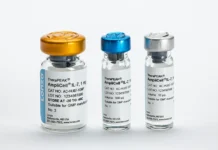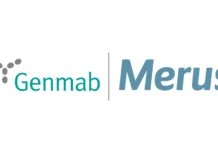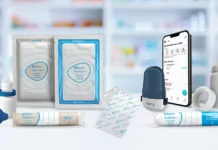Increasingly elaborate international clinical trials are demanding a smarter, streamlined approach from supply partners and better collaboration with sponsors.
In this environment, Interactive Response Technology (IRT) systems have been a staple and a powerful, practical tool for optimizing a product’s progress to launch and simplifying trial management.
IRT systems provide clinical trials with essential software services such as patient enrolment, randomization, inventory management, and study drug dispensing. The system is used to manage patient interactions and drug supplies during clinical trials and perform a range of essential functions for sponsors, drug depots, and investigative sites.
Here, Eddie Montoya, IRT specialist and Dave Holly, senior manager of IRT Development & Operations at Sharp Clinical Services explore the role and benefits of IRT in clinical trial and supply chain management.
Increasing trial data captured accuracy while decreasing cost
Bringing a drug through clinical studies and into the market is incredibly expensive – the data management side of a trial usually accounts for around 30% of the total cost when procedural, site monitoring and staff time is factored in. An effective IRT system can mitigate this cost while simultaneously ensuring captured data’s integrity.

Outdated interactive voice response systems (IVRS), where data is captured in phone calls, are rare and have mostly been replaced with web-based IRTs which are more accurate in regard to data entry as users can see what they are selecting on screen as opposed to making selections on a keypad. This approach also improves data integrity as the input comes directly from the investigator site and is communicated to sponsor and clinical trial management (CTMS) and electronic data capture (EDC) systems –preventing the need for double entry which is subject to additional human error.
A visual, web-based interface is much more adaptable for more complex clinical trials which has been the trajectory in the industry for the past two decades.
Randomized clinical trials have long been considered the gold standard in clinical research (Concato et al, 2000). Using an IRT to allocate the randomization scheme further helps to eliminate bias. IRT systems are increasingly being leveraged to accommodate highly complex dynamic allocation methods such as minimization, introduced by Pocock and Simon (1975) to help reduce imbalances across treatment arms while taking into account prognostic factors such as disease stage. IRT can be used to facilitate this and other equally complex dynamic allocation methods.
Leveraging the power of IRT to maximising supply chain efficiency
From a global perspective the most challenging aspect is to manage the distribution of materials between contract partners, sponsors and logistics businesses involved in import and export.

IRT systems can manage this complexity by having it configured to know where martial types can be used and positioning supplies at the right place, in the right quantities, and at the right time. This is accomplished by setting system parameters based on clinical supply chain expertise as well as in-depth knowledge of the clinical study.
However, simply adding IRT to a trial does not guarantee an efficient supply chain solution. Depending upon the complexity, number of material types, label languages, regions, countries, and dosing schedules, the resulting supply chain solution may function, but questions will remain around its efficiency and cost effectiveness. What the IRT system must be able to do is help reduce waste, right sizere supply shipments, and, above all, prevent site stock-outs.
IRT software is often an underused resource in the initiation of logistics and distribution planning. Many of the variable factors in a clinical trial can be configured and managed using IRT, such as:
- Shipping size: IRT systems can be configured to ship in certain sizes. For example, If the elected shipper can support 12kits, then the IRT system can be configured to send in multiples of 12. This reduces the overall cost of shipping by always sending the max amount the shipper can handle and reducing resupply needs.
- Returns: IRT systems can integrate with warehouse return system to perform accountability for returns from clinical sites
- Site storage limitations: Some IRT systems can be configured with site storage limitations and set up to alert the clinical operations team when that limitation is reached. This parameter setting could also be used to limit the amount of controlled drug on site.
- Blinding: IRT systems can be set up to allow shipping groups to support the complexities of blinding such as when a study that has four different kit types and two of these must always be shipped together to maintain the blinding.
- Top-up: IRT allows the ability to configure the ‘top-up’ to the supply levels of all material types in a shipping group. Although a shipment is not required today, it will be in the future. Some systems offer supply forecasting which predict patient enrolment and retention, and clinical supply chain consumption and calculate supply requirements accordingly.

Identifying optimal drug package size will save costs
Beyond the broader supply chain considerations, there are subtler elements that can have a significant impact on trial logistics. Early in the trial planning phase, a packaging company may suggest that money can be saved by putting more drug in one package. If a patient is to use one blister card per week for the duration of a 10-week study, putting all 10 cards into one package may look like a logical solution. IRT systems can be configured to import the kit list and dispense a 10-pack at randomization. On the surface, this also appears to be more efficient for the IRT system by eliminating the need for extra dosing visits over the 10 weeks.
However, experience reveals that a certain percentage of trial patients will withdraw (discontinue) from the study before they complete treatment. A 10-week supply assigned to a patient who withdraws from the study just two weeks into treatment will waste eight weeks’ supply, as after its assigned to one patient, it cannot be re-assigned to another.
Additionally, it is important to consider how much drug would be wasted if a site, or patient, lost, or damaged, a 10-pack of blister cards and a replacement kit was needed. Both study staff and patients may accidentally damage drugs, forget to refrigerate medications, or have other mishaps over the course of the trial. With all drug boxed in packs of 10, the patient must be issued another 10-pack kit. This means trial sites must have several 10-pack kits in reserve (buffer stock) for emergency resupplies. If the replacement pack is needed towards the end of the trial, most of the replacement kit will be wasted. This potentially adds cost if many of the 10-pack kits are left over and must be returned to the depot.
These ‘human-nature’ factors can result in the 10-pack solution costing more money, rather than saving it. Bulk packaging sometimes results in more shipments and more drug being wasted.
This is where the use of IRT and effective planning can make a significant positive impact on the trial, advising for example that dispensing one or two blister cards over several trial visits may be more cost effective. The loss of a single blister card is much easier to replace than the 10-pack of blister cards and costs significantly less. Even though more IRT dispensing visits are required, corresponding to the patient visit schedule, there is a significant cost savings in kit replacement needs. Similar strategies should always be considered during the planning phase especially with regards to expensive and limited drug supply as well as large global studies.
Greater visibility with IRT will impact positively on manufacturing
Establishing the optimal amount of drug to manufacture and package for a new trial can be very challenging. Some clients decide to package only enough for the enrolment needs of their trial without considering expiry, initial supply, potential under producing sites and patient withdrawal rates. However, without considering IRT and drug usage, the stock could quickly be depleted just by supplying sites with initial inventories.

Discussing drug requirements with IRT professionals at an early phase brings supply chain staff together with the clinical team so that drug usage expectations can be discussed. If half of the packaged drug will be delivered to the sites upon study start-up, then the inventory may not cover the expected resupply projections. Once this expectation is known it may lead to an increase of the initial manufacturing/packaging amount with follow-up runs to support the study throughout its lifecycle.
The reverse scenario – packaging too much drug for study start-up – can result in drug expiring before it can be used. This too will become more visible through IRT with the scheduling of patients and the resupply model being used to optimize supply. Projections for enrolment and patient dosing visits may reveal that the initial drug inventory will expire before all patients have completed the study. Two or more smaller manufacturing runs at key milestones will prevent site stock-outs.
When flexible dosing can help
For dose escalation and titration studies, deciding what combinations of dosing quantities may also require investigation into actual drug usage and dispensation. For example, a protocol using four dosing levels of 10mg, 15mg, 20mg, and 25mg vials may require manufacturing one vial type of each dose level. Sponsors will need to explore whether it is necessary to manufacture all four vial dosing sizes, or if there is there a more cost-effective solution.

Once again, IRT can bring manufacturing, packaging, and the clinical teams together to collaborate on the best dispensing and resupply patterns balancing the needs of trial patients with the availability of inventory and capacity of the clinical sites. For example, if there are limitations on storage space, especially for refrigerated medications, can maintaining an inventory of 25mg vials may compromise its ability to store other dose amounts. This can lead to shortages if emergency kit replacements are needed. The discussion may result in a decision to pack just 10mg and 15mg vials and allow the IRT system to select the correct combination of vials to dispense i.e. 20mg patients can receive two 10mg vials, and 25mg patients can receive one 10mg bottle and one 15mg bottle. This adjustment also provides the sites with inventory that can be used for all patients, including any replacements. All patients can use one or both dosing sizes, but a 25mg vial could only be used by patients requiring the 25mg dose.
Summary: Advantages of IRT
Despite the promises of IRT, the selection of a vendor is often considered late-on in the planning of a clinical trial, which leaves sponsors at great risk of spending money on wasted drug and unplanned resupply shipments. One of the most expedient ways to achieve a successful supply chain solution is to leverage the real-world experience and advice of IRT Professionals.

IRT is at the intersection of drug assignments, inventory, and resupply management, this provides professionals in the field with a very specific skill set resulting from clinical trial experiences. The IRT team is often the bridge between the supply and clinical operations team, helping them find the optimal balance between their needs.
By bringing an IRT team into the planning process earlier, solution providers are in a better position to support the complex trial designs, using their experience and lessons learned to avoid the common pit falls as well as suggesting possible solutions and work arounds that have been used successfully in studies of a similar type.
IRT providers get to observe, first-hand, the many use case scenarios that result when sites are randomizing and dispensing study medications to trial patients. These observational insights can prove very useful, especially when deciding how a drug will be manufactured and packaged. The advice provided by IRT vendors may prove especially useful to the small to medium-sized pharmaceutical companies that may not have in-house supply chain staff.
As IRT systems bring together clinical sites, study medications and patients, very often IRT specialists bring clarity and visibility in planning. for actual trial needs. Including IRT professionals earlier in the planning phase of clinical trials may result in a better understanding of supply chain needs, increasing the efficiency of inventory management and therefore bringing cost savings over the course of the trial– benefiting sponsors and ultimately, the end patient.






















